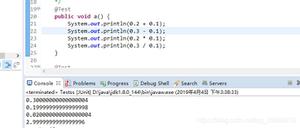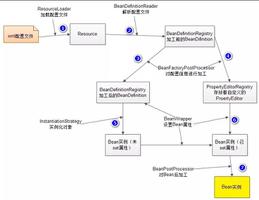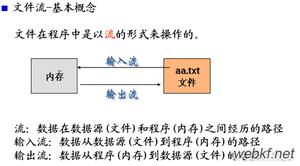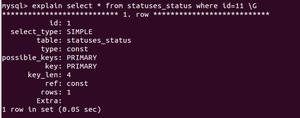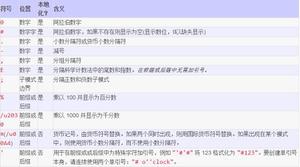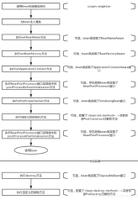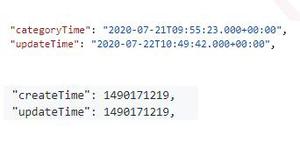Spring3系列5-Bean的基本用法
本文内容纲要:
- Spring3系列5-Bean的基本用法- 一、 Spring中Bean的相互引用
- 二、 Spring中给Bean属性注入value
- 三、 Spring Inner Bean—内部嵌套的Bean
- 四、 Spring Bean Scopes—Bean的作用域
- 五、 Spring Collections(List、Set、Map、Properties) — 集合类型的Bean
- 一、 Spring中Bean的相互引用
- 1. 引用不同xml配置文件中的bean
- 2. 引用相同xml配置文件中的bean
- 注意
- 二、 Spring中给Bean属性注入value
- 1. 一般方法
- 2. 缩写方法
- 3. ”p” schema
- 三、 Spring Inner Bean—内部嵌套的Bean
- 四、 Spring Bean Scopes—Bean的作用域
- 五、 Spring Collections(List、Set、Map、Properties) — 集合类型的Bean
- 1. List
- 2. Set
- 3. Map
- 4. Properties
Spring3系列5-Bean的基本用法
本篇讲述了Bean的基本配置方法,以及Spring中怎样运用Bean。
主要内容如下:
一、 Spring中Bean的相互引用
二、 Spring中给Bean属性注入value
三、 Spring Inner Bean—内部嵌套的Bean
四、 Spring Bean Scopes—Bean的作用域
五、 Spring Collections(List、Set、Map、Properties) — 集合类型的Bean
一、 Spring中Bean的相互引用
在Spring框架中,可以通过ref来互相引用相同或不同xml配置文件中定义的Bean。
1. 引用不同xml配置文件中的bean
如果你想引用不同xml配置文件中的bean,可以使用’ref’标签,结合’bean’属性。
在下边的例子中,bean’ OutputHelper’在’ Spring-Common.xml’文件中被定义,通过使用’ref’标签,结合’bean’属性,可以引用’ Spring-Output.xml’文件中定义的两个bean(“CsvOutputGenerator” 和 “JsonOutputGenerator“)
配置文件:Spring-Output.xml如下
<beans xmlns="http://www.springframework.org/schema/beans" xmlns:xsi="http://www.w3.org/2001/XMLSchema-instance"
xsi:schemaLocation="http://www.springframework.org/schema/beans
http://www.springframework.org/schema/beans/spring-beans-2.5.xsd">
<bean id="CsvOutputGenerator" class="com.lei.output.impl.CsvOutputGenerator" />
<bean id="JsonOutputGenerator" class="com.lei.output.impl.JsonOutputGenerator" />
</beans>
配置文件: Spring-Common.xml如下
<beans xmlns="http://www.springframework.org/schema/beans" xmlns:xsi="http://www.w3.org/2001/XMLSchema-instance"
xsi:schemaLocation="http://www.springframework.org/schema/beans
http://www.springframework.org/schema/beans/spring-beans-2.5.xsd">
<bean id="OutputHelper" class="com.lei.output.OutputHelper">
<property name="outputGenerator" >
<ref bean="CsvOutputGenerator"/>
</property>
</bean>
</beans>
2. 引用相同xml配置文件中的bean
如果你想引用相同xml配置文件中的bean,可以使用’ref’标签,结合’local’属性。
配置文件:Spring-Output.xml如下
<beans xmlns="http://www.springframework.org/schema/beans" xmlns:xsi="http://www.w3.org/2001/XMLSchema-instance"
xsi:schemaLocation="http://www.springframework.org/schema/beans
http://www.springframework.org/schema/beans/spring-beans-2.5.xsd">
<bean id="OutputHelper" class="com.lei.output.OutputHelper">
<property name="outputGenerator" >
<ref local="CsvOutputGenerator"/>
</property>
</bean>
<bean id="CsvOutputGenerator" class="com.lei.output.impl.CsvOutputGenerator" />
<bean id="JsonOutputGenerator" class="com.lei.output.impl.JsonOutputGenerator" />
</beans>
注意
实际上,’ref’标签中’bean’属性,既可以引用相同xml文件中的bean,也可以引用不同xml文件中的bean,但是,考虑到项目的可读性,引用相同xml配置文件的bean时,应该尽量使用’local’属性。
二、 Spring中给Bean属性注入value
Spring中,通常有3种方法给Bean的属性注入value。
一般方法,缩写方法,”p” schema方法。
先看下边的Bean:FileNameGenerator.java,其中包含两个properties,name和type,我们向两个properties注入value。
package com.lei.common;public class FileNameGenerator
{
private String name;
private String type;
public String getName() {
return name;
}
public void setName(String name) {
this.name = name;
}
public String getType() {
return type;
}
public void setType(String type) {
this.type = type;
}
}
1. 一般方法
<beans xmlns="http://www.springframework.org/schema/beans" xmlns:xsi="http://www.w3.org/2001/XMLSchema-instance"
xsi:schemaLocation="http://www.springframework.org/schema/beans
http://www.springframework.org/schema/beans/spring-beans-2.5.xsd">
<bean id="FileNameGenerator" class="com.lei.common.FileNameGenerator">
<property name="name">
<value>lei</value>
</property>
<property name="type">
<value>txt</value>
</property>
</bean>
</beans>
2. 缩写方法
<beans xmlns="http://www.springframework.org/schema/beans" xmlns:xsi="http://www.w3.org/2001/XMLSchema-instance"
xsi:schemaLocation="http://www.springframework.org/schema/beans
http://www.springframework.org/schema/beans/spring-beans-2.5.xsd">
<bean id="FileNameGenerator" class="com.lei.common.FileNameGenerator">
<property name="name" value="lei" />
<property name="type" value="txt" />
</bean>
</beans>
3. ”p” schema
<beans xmlns="http://www.springframework.org/schema/beans" xmlns:xsi="http://www.w3.org/2001/XMLSchema-instance"
xmlns:p="http://www.springframework.org/schema/p"
xsi:schemaLocation="http://www.springframework.org/schema/beans
http://www.springframework.org/schema/beans/spring-beans-2.5.xsd">
<bean id="FileNameGenerator" class="com.lei.common.FileNameGenerator"
p:name="lei" p:type="txt" />
</beans>
注意,这种方法需要在bean的配置文件xml中,加入以下声明
xmlns:p=”http://www.springframework.org/schema/p
三、 Spring Inner Bean—内部嵌套的Bean
以下Demo演示了一个Bean中嵌套了另一个Bean,即所谓的内部嵌套Bean的配置方法,内部嵌套的Bean支持属性(property)注入和构造函数(constructor-arg)注入。
先看一下Customer.java 和Person.java
package com.lei.common;public class Customer
{
private Person person;
public Customer(Person person) {
this.person = person;
}
public void setPerson(Person person) {
this.person = person;
}
@Override
public String toString() {
return "Customer [person=" + person + "]";
}
}
package com.lei.common;
public class Person
{
private String name;
private String address;
private int age;
//getter and setter methods…此处省略
@Override
public String toString() {
return "Person [address=" + address + ",
age=" + age + ", name=" + name + "]";
}
}
配置Bean时,要在Customer的Bean中注入内部Bean,即Person。
1. 在Customer中,可以用**’ref’属性引用Person的Bean****,如下**
<beans xmlns="http://www.springframework.org/schema/beans" xmlns:xsi="http://www.w3.org/2001/XMLSchema-instance"
xsi:schemaLocation="http://www.springframework.org/schema/beans
http://www.springframework.org/schema/beans/spring-beans-2.5.xsd">
<bean id="CustomerBean" class="com.lei.common.Customer">
<property name="person" ref="PersonBean" />
</bean>
<bean id="PersonBean" class="com.lei.common.Person">
<property name="name" value="lei" />
<property name="address" value="address1" />
<property name="age" value="28" />
</bean>
</beans>
2. 以上方法利用**’ref’很好的引用了Person****,但是,一旦Person仅仅被用在Customer下,也就是说不会被别的Bean引用,最好的方法就是在Customer的bean中声明一个内部Bean,如下**
<beans xmlns="http://www.springframework.org/schema/beans" xmlns:xsi="http://www.w3.org/2001/XMLSchema-instance"
xsi:schemaLocation="http://www.springframework.org/schema/beans
http://www.springframework.org/schema/beans/spring-beans-2.5.xsd">
<bean id="CustomerBean" class="com.lei.common.Customer">
<property name="person">
<bean class="com.lei.common.Person">
<property name="name" value="lei" />
<property name="address" value="address1" />
<property name="age" value="28" />
</bean>
</property>
</bean>
</beans>
3. 内部Bean也可以通过构造函数注入
<beans xmlns="http://www.springframework.org/schema/beans" xmlns:xsi="http://www.w3.org/2001/XMLSchema-instance"
xsi:schemaLocation="http://www.springframework.org/schema/beans
http://www.springframework.org/schema/beans/spring-beans-2.5.xsd">
<bean id="CustomerBean" class="com.lei.common.Customer">
<constructor-arg>
<bean class="com.lei.common.Person">
<property name="name" value="lei" />
<property name="address" value="address1" />
<property name="age" value="28" />
</bean>
</constructor-arg>
</bean>
</beans>
注意,以上2,3两种情况下,Person的Bean配置中,可以忽略id属性。
四、 Spring Bean Scopes—Bean的作用域
在Spring中,Bean的作用域决定了从Spring容器中返回的Bean实例的类型。
在Spring中,支持以下5中类型的作用域:
- singleton — 单例模式,由IOC容器返回一个唯一的bean实例。
- prototype — 原型模式,被请求时,每次返回一个新的bean实例。
- request — 每个HTTP Request请求返回一个唯一的Bean实例。
- session — 每个HTTP Session返回一个唯一的Bean实例。
- globalSession — Http Session全局Bean实例。
注:大多数情况下,你可能只需要处理Spring的核心作用域 — 单例模式(singleton)和原型模式(prototype),默认情况下,作用域是单例模式。
singleton和prototype****区别
CustomerService.java如下
package com.lei.customer.services;public class CustomerService
{
String message;
public String getMessage() {
return message;
}
public void setMessage(String message) {
this.message = message;
}
}
如果是singleton情况下的配置如下
<beans xmlns="http://www.springframework.org/schema/beans" xmlns:xsi="http://www.w3.org/2001/XMLSchema-instance"
xsi:schemaLocation="http://www.springframework.org/schema/beans
http://www.springframework.org/schema/beans/spring-beans-2.5.xsd">
<bean id="customerService"
class="com.lei.customer.services.CustomerService" />
</beans>
以上配置中,如果没有指定scope范围,默认情况下是sighleton模式。
运行下边的代码:
package com.lei.common;import org.springframework.context.ApplicationContext;
import org.springframework.context.support.ClassPathXmlApplicationContext;
import com.lei.customer.services.CustomerService;
public class App
{
public static void main( String[] args )
{
ApplicationContext context =
new ClassPathXmlApplicationContext(new String[] {"Spring-Customer.xml"});
CustomerService custA = (CustomerService)context.getBean("customerService");
custA.setMessage("Message by custA");
System.out.println("Message : " + custA.getMessage());
//retrieve it again
CustomerService custB = (CustomerService)context.getBean("customerService");
System.out.println("Message : " + custB.getMessage());
}
}
输出结果如下:
Message : Message by custAMessage : Message by custA
Protptype****情况下的配置如下:
<beans xmlns="http://www.springframework.org/schema/beans" xmlns:xsi="http://www.w3.org/2001/XMLSchema-instance"
xsi:schemaLocation="http://www.springframework.org/schema/beans
http://www.springframework.org/schema/beans/spring-beans-2.5.xsd">
<bean id="customerService" class="com.lei.customer.services.CustomerService"
scope="prototype"/>
</beans>
再运行一下测试代码,输出结果如下:
Message : Message by custAMessage : null
设置scope为prototype后,测试代码中,每调用一次getBean()方法后,都会得到一个新的实例。
五、 Spring Collections(List、Set、Map、Properties) — 集合类型的Bean
本节讲述怎样将值注入集合类型,包含以下四种主要的集合类型:
List ——
Set ——
Map ——
Properties ——
首先写一个Bean,一个Customer对象,包含四种集合属性,如下,
Customer.java
package com.lei.common;import java.util.List;
import java.util.Map;
import java.util.Properties;
import java.util.Set;
public class Customer
{
private List<Object> lists;
private Set<Object> sets;
private Map<Object, Object> maps;
private Properties pros;
//...此处省略setter和getter
}
1. List
<property name="lists"> <list>
<value>1</value>
<ref bean="PersonBean" />
<bean class="com.lei.common.Person">
<property name="name" value="leiList" />
<property name="address" value="address" />
<property name="age" value="28" />
</bean>
</list>
</property>
2. Set
<property name="sets"> <set>
<value>1</value>
<ref bean="PersonBean" />
<bean class="com.lei.common.Person">
<property name="name" value="leiSet" />
<property name="address" value="address" />
<property name="age" value="28" />
</bean>
</set>
</property>
3. Map
<property name="maps"> <map>
<entry key="Key 1" value="1" />
<entry key="Key 2" value-ref="PersonBean" />
<entry key="Key 3">
<bean class="com.lei.common.Person">
<property name="name" value="leiMap" />
<property name="address" value="address" />
<property name="age" value="28" />
</bean>
</entry>
</map>
</property>
4. Properties
<property name="pros"> <props>
<prop key="admin">admin@nospam.com</prop>
<prop key="support">support@nospam.com</prop>
</props>
</property>
综上,所有的bean配置文件如下
<beans xmlns="http://www.springframework.org/schema/beans" xmlns:xsi="http://www.w3.org/2001/XMLSchema-instance"
xsi:schemaLocation="http://www.springframework.org/schema/beans
http://www.springframework.org/schema/beans/spring-beans-2.5.xsd">
<bean id="CustomerBean" class="com.lei.common.Customer">
<!-- java.util.List -->
<property name="lists">
<list>
<value>1</value>
<ref bean="PersonBean" />
<bean class="com.lei.common.Person">
<property name="name" value="leiList" />
<property name="address" value="address" />
<property name="age" value="28" />
</bean>
</list>
</property>
<!-- java.util.Set -->
<property name="sets">
<set>
<value>1</value>
<ref bean="PersonBean" />
<bean class="com.lei.common.Person">
<property name="name" value="leiSet" />
<property name="address" value="address" />
<property name="age" value="28" />
</bean>
</set>
</property>
<!-- java.util.Map -->
<property name="maps">
<map>
<entry key="Key 1" value="1" />
<entry key="Key 2" value-ref="PersonBean" />
<entry key="Key 3">
<bean class="com.lei.common.Person">
<property name="name" value="leiMap" />
<property name="address" value="address" />
<property name="age" value="28" />
</bean>
</entry>
</map>
</property>
<!-- java.util.Properties -->
<property name="pros">
<props>
<prop key="admin">admin@nospam.com</prop>
<prop key="support">support@nospam.com</prop>
</props>
</property>
</bean>
<bean id="PersonBean" class="com.lei.common.Person">
<property name="name" value="lei1" />
<property name="address" value="address 1" />
<property name="age" value="28" />
</bean>
</beans>
本文内容总结:Spring3系列5-Bean的基本用法,一、 Spring中Bean的相互引用,二、 Spring中给Bean属性注入value,三、 Spring Inner Bean—内部嵌套的Bean,四、 Spring Bean Scopes—Bean的作用域,五、 Spring Collections(List、Set、Map、Properties) — 集合类型的Bean,一、 Spring中Bean的相互引用,1. 引用不同xml配置文件中的bean,2. 引用相同xml配置文件中的bean,注意,二、 Spring中给Bean属性注入value,1. 一般方法,2. 缩写方法,3. ”p” schema,三、 Spring Inner Bean—内部嵌套的Bean,四、 Spring Bean Scopes—Bean的作用域,五、 Spring Collections(List、Set、Map、Properties) — 集合类型的Bean,1. List,2. Set,3. Map,4. Properties,
原文链接:https://www.cnblogs.com/leiOOlei/p/3532604.html
以上是 Spring3系列5-Bean的基本用法 的全部内容, 来源链接: utcz.com/z/295963.html

